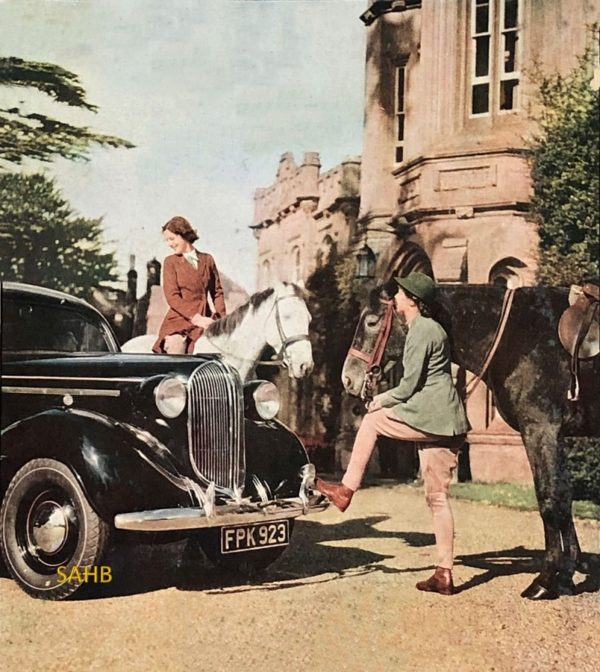
Chrysler set up a factory off Mortlake Road, Kew in the early 1920s to beat British import restrictions. The factory assembled parts from complete or partial ‘knock-down’ kits imported from Chrysler’s Canadian factory. Some sources suggest that the Kew assembly plant continued until 1967, while others are sure that it was destroyed by a bomb during World War II.
Chrysler also tried to overcome the British reluctance to buy an American car, even one assembled here, by giving the products of the British factory the names of towns in Surrey: the Chrysler ‘Kew’ and ‘Wimbledon’, as well as the DeSoto ‘Richmond’ and ‘Kingston’.
The car in our Snapshot is a 1938 Chrysler Kew model – and it is in fact not a Chrysler but a Plymouth, as was its sister car the Chrysler Wimbledon. There is no solid information of how the Kew differed from the Wimbledon, but the latter was equipped with overdrive as standard and it is likely that the Kew was the entry-level Plymouth P5X with a small-bore 2.8-litre ‘Export’ engine and the Wimbledon the De Luxe Plymouth P5 with the 3.3-litre American powerplant. This is possible: service information in Motor Trader for the 1937 models show the Kew as P4X and Wimbledon (with overdrive) as P4, with the same difference in engine size.
Not only has this British-assembled car been renamed as a Chrysler, but the hood (bonnet?) ornament is a 1938 Chrysler one, instead of the rather charming Plymouth three-masted sailing ship.
The Plymouth marque was introduced in 1928 as Chrysler’s first low-priced offering, intended to compete in the market dominated by Chevrolet and Ford. It was always sold as a cheaper alternative to the Chrysler. The use of the more up-market Chrysler name in the UK was, however, more likely to be simply a result of the unfamiliarity of the Plymouth brand name to British buyers.
Just to confuse matters, Chrysler did introduce a Plymouth to Britain in 1939 (apparently with no model name). It differed very little from the Kew and Wimbledon: lower gearing than the Kew and removal of the Wimbledon’s overdrive. All cars – Kew, Wimbledon and Plymouth – had three-speed gearboxes, semi-elliptic suspension all round and side-valve six-cylinder engines. The larger engine produced 82 bhp.
This 1938 car can be identified by the three chrome strips low down on either side of the radiator – one of very few changes from 1937. In 1939 all three models looked very different, with peaked prows, vee-windscreens and headlamps incorporated into the wings. The 1939 Kew and Wimbledon models were the last Chrysler-badged Plymouths to be sold in Britain.
Photo courtesy of The Richard Roberts Archive.







Leave a Comment